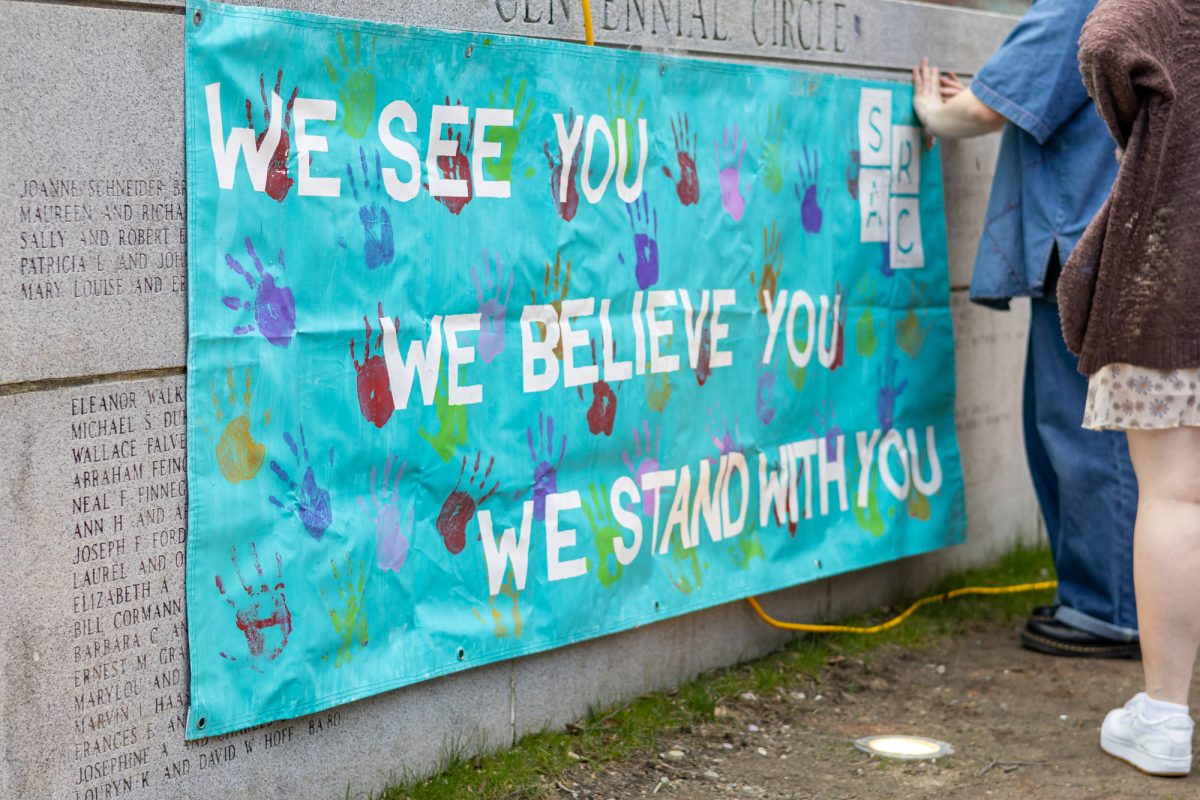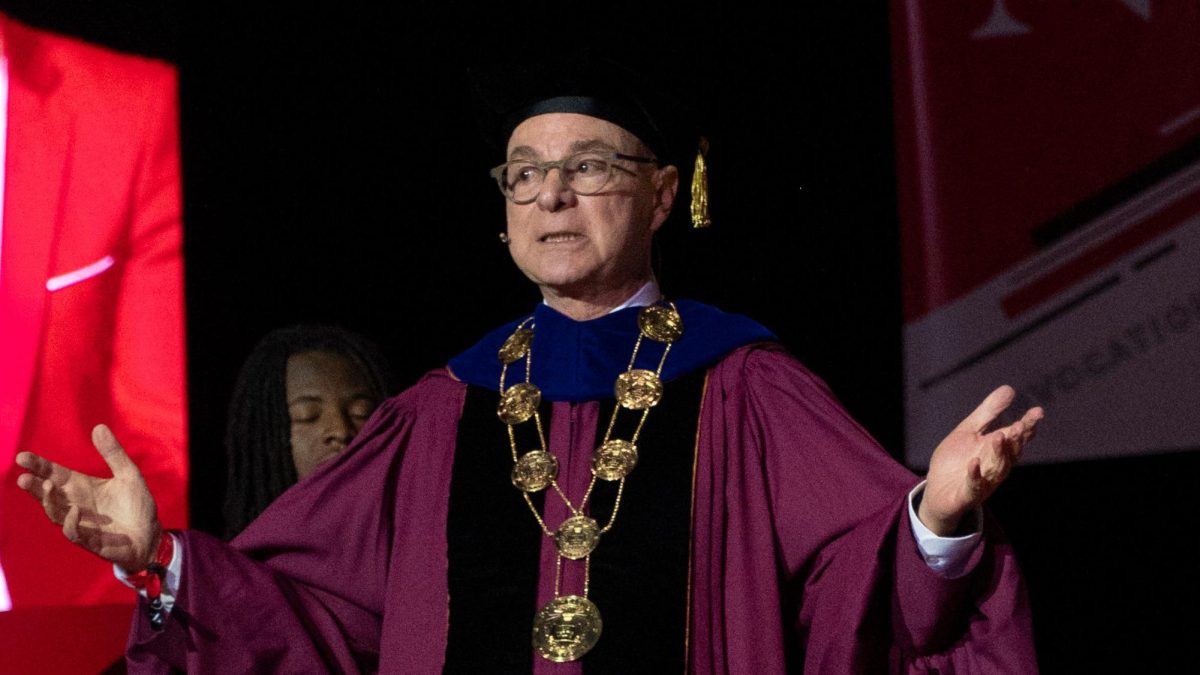By By Jeanine Budd, News Staff
The Science Park Green Line T station has a new name. Since Jan. 21, the station has been displaying signs that read ‘Science Park/West End,’ paying tribute to an old neighborhood buried beneath condos and government buildings.
Stretching from North Washington Street to the bottom north side of Beacon Hill, the West End today bears little resemblance to what it once was.
Arthur Geller, a former West End resident now living in Newton, said that while the West End may once again have its original name, it’s nothing like it used to be.
‘It was a very mixed neighborhood,’ Geller said. ‘It had immigrants:’ a lot of Jewish came in, a lot of Italians came in, Polish and so forth. And there were all kinds of small stores. They had great bakeries, great fish markets and meat markets.’
James Campano, a former resident and head of the West End Museum and West Ender newspaper, said the neighborhood had as many as 24 different ethnic and racial groups living within its borders at one time.
‘There were so many cultures, they all intermingled,’ he said. ‘The North End was mostly Italian, Southie was mostly Irish, but the West End had a mix of all of them. As long as you didn’t do anything in the neighborhood like rob somebody or something, you were alright. But if you did anything, you got chastised.’
In the 1930s and ’40s, when Geller and Campano were growing up in the West End, neighborhood residents were more accepting of different cultures than in other parts of Boston, Campano said.
‘In those days Italians and Irish hated each other,’ Campano said. ‘If you got picked up by an Irish cop and you had an Italian surname, you took a beating. But in the West End, if you hated the Irish, it meant the Irish outside of the West End, because these were our Irish.’
Today, the West End is a different place. There are no narrow cobblestone streets left, no two, three and four story brick tenements. It’s no longer a cultural center, where families from all around the world are compacted into small city blocks.
‘There is zero similarity between the West End then and the West End now,’ said author and historian David Kruh who wrote ‘Scollay Square:’ Images of America’ about the area now known as Government Center.
In the 1950s, the practice of urban renewal was a trend spreading rapidly throughout the United States, he said. Cities would take a block of housing, or an entire neighborhood, and raze it to make way for newer, more modern business establishments.
‘They had plans to put real estate, restaurants and that sort of stuff in the South End, but nobody wanted to go there because back then, the South End was considered a hell-hole,’ Campano said. ‘So now, the city goes looking for a slum and a good location. The West End is at the foot of Beacon Hill, right on the river.’
City officials said improving the existing West End would be a bad business decision, and the neighborhood’s condition deteriorated, Campano said.
‘Around 1954 they said that if you fix up your apartment buildings, you might not get your money back because they’re going to end up getting taken,’ he said. ‘So street cleaning stopped, garbage pickup became sparse and they created an image of a slum.’
Between 1958 and 1960, about 7,000 West Enders vacated their homes as the city demolished the neighborhood to make way for urban renewal projects, Geller said. Of course, this didn’t come without resistance.
‘There was a strong community there and the people that lived there, they knew what was going on,’ Geller said.
As a response, the Save the West End committee was formed by resident Joe Caruso, according to local media reports at the time.
The committee produced leaflets advertising what they saw as the city’s immoral condemnation of their neighborhood and filed a lawsuit against the city that went all the way to the Massachusetts Supreme Judicial Court, but inevitably failed at stopping the destruction, Campano said.
Photographs in the book ‘Boston’s West End,’ by Anthony Mitchell Sammarco, show the windows of an old store-turned-committee headquarters on Staniford Street, where committee members declared themselves the ‘West End Minutemen’ and had a sign pleading ‘Don’t tread on me.’
When their campaign didn’t change the city’s mind, Campano said he and his buddies decided to get a little violent with their protests.
‘We did do a little bit of urban warfare, I mean, we lit a crane on fire with a Molotov cocktail,’ Campano said. ‘[The Committee to Save the West End] tried to stop it legally, and they failed. We tried to stop it illegally, and we failed.’
Today, only one original West End building remains standing:’ St. Joseph’s Church on William Cardinal O’Connel Way, next to Massachusetts General Hospital, according to a March 2008 article in West Ender.
The West End remains today memorialized in photographs of Scollay Square (now Government Center) in City Hall and in the West End Museum at 150 Staniford St.
West Ender newspaper also seems to serve as a way for former West Enders to not just reminisce, but to let out their anger about what many critics have called ‘urban renewal run amok,’ according to a March 20, 2008 Boston Globe article. The West Ender’s masthead boasts that the paper is ‘dedicated to being the collective conscience of urban renewal and eminent domain in the city of Boston.’
In a March 2008 letter to the editor of the West Ender, Eleanor Venezia described walking through today’s West End through government buildings and towering condos and asking herself, ‘This was supposed to be an improvement?’ She concluded her letter by telling Campano to ‘Keep up the good work. Keep reminding people that once there was a West End and all the people that were forced to move against their will.’
Three organizations from the West End are still active and serving the Greater Boston area.
The West End House, a former recreational facility in the West End, which also had a summer camp in Maine, is now located in Allston.
The Elizabeth Peabody House, known for its theatre productions (Leonard Nimoy, who played Mr. Spock on Star Trek was known to show his face there) is now in Somerville.
The Burroughs Newsboys Foundation served as a recreational facility complete with a singing group. It closed its doors in 1951, but stayed alive through Aggasiz Village, the place where its own summer camps had been held.
Now, all that’s left to do is to remember the West End, Geller said.
‘I think it was a really vital part of Boston,’ he said. ‘It would have eventually been gentrified like the North and South End, but it would have kept its character.’
Sitting among stacks of old photographs and documents in the West End Museum, Campano said,
‘I mean, you can’t go back,’ he said, ‘but if I could find a way, I would.’








